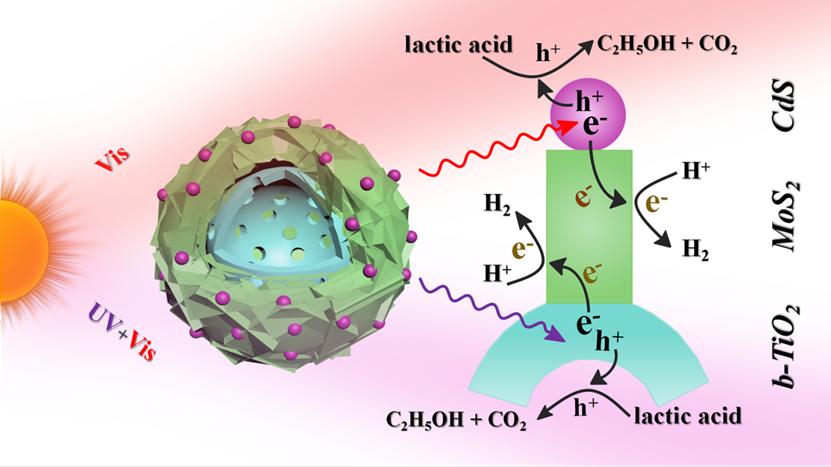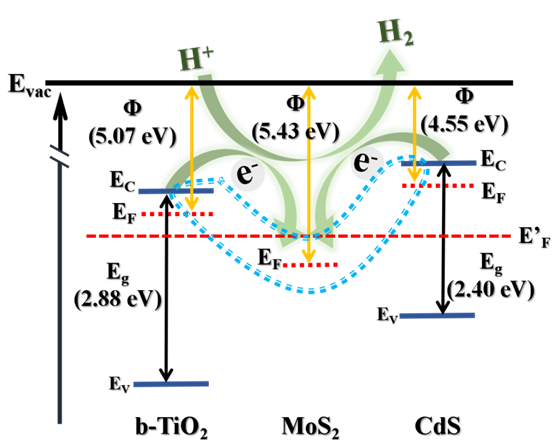Adv. Mater. 2018, 30, 1804282.

Bojing Sun, Wei Zhou*, Wei Li*, Honggang Fu*, Synthesis of Particulate Hierarchical Tandem Heterojunctions toward Optimized Photocatalytic Hydrogen Production. (Adv. Mater. 2018, 30, 1804282.)
Photocatalytic water splitting into H2 over particulate semiconductors has been regarded as one of the most promising protocols to overcome the global challenges in energy and climate change. However, it is challenging to harvest the full solar spectrum in a particulate photocatalyst for high activity. Herein, a hierarchical hollow black TiO2/MoS2/CdS tandem heterojunction photocatalyst (Figure 1), which allows broad-spectrum absorption, thus delivering enhanced hydrogen evolution performance is designed and synthesized. The MoS2 nanosheets not only function as a cost-effective co-catalyst but also act as a bridge to connect two light-harvesting semiconductors into a tandem heterojunction where the CdS nanoparticles and black TiO2 spheres absorb UV and visible light on both sides efficiently, coupling with the MoS2 cocatalyst into a particulate photocatalyst system (Figure 2). Consequently, the photocatalytic hydrogen rate of the black TiO2/MoS2/CdS tandem heterojunction is as high as 179 μmol h-1 per 20 mg photocatalyst under visible-light irradiation, which is almost 3 times higher than that of black TiO2/MoS2 heterojunctions (57.2 μmol h-1). Most importantly, the stability of CdS nanoparticles in the black TiO2/MoS2/CdS tandem heterojunction is greatly improved compared to MoS2/CdS because of the formation of tandem heterojunctions and the strong UV-absorbing effect of black TiO2. Such a tandem architectural design provides new ways for synthesizing particulate photocatalysts with high efficiencies.

Figure 1. a) SEM images of black-TiO2 microspheres and b) black-TiO2/MoS2 microspheres. c,f) SEM, d) TEM, and e) HRTEM image of black-TiO2/MoS2/CdS tandem heterojunctions microspheres. g-k) The corresponding EDX mapping images of elemental Ti, O, Mo, S, and Cd in the selected area in panel (f) (marked by square).

Figure 2. Schematic illustration of photogenerated electron transfer of tandem heterojunction.
